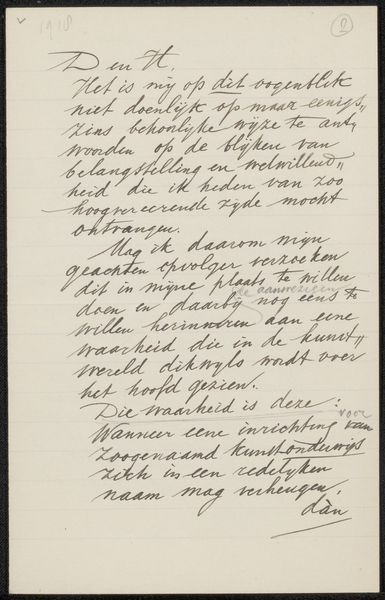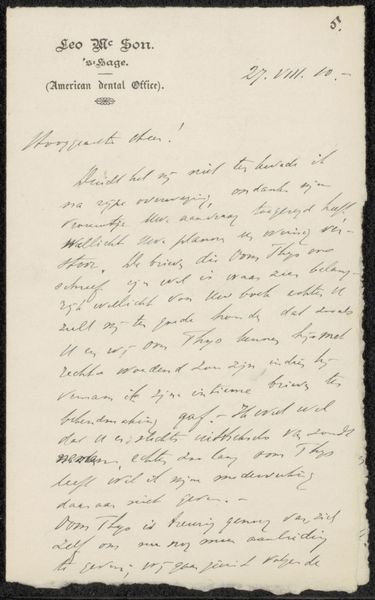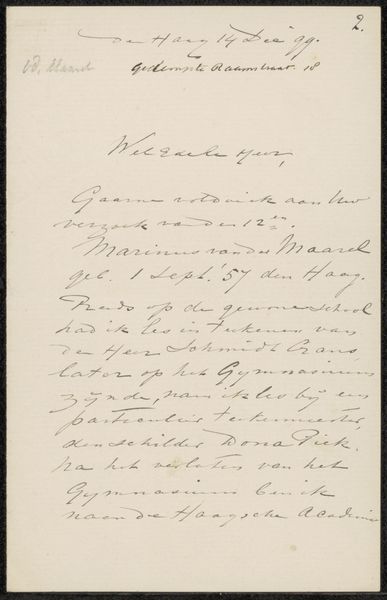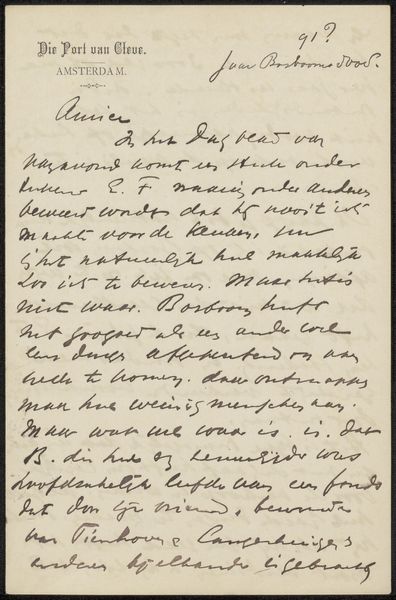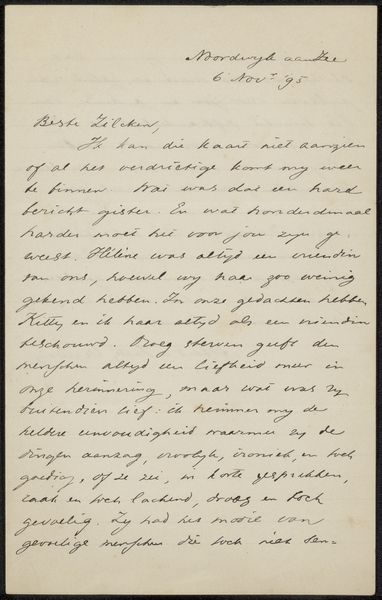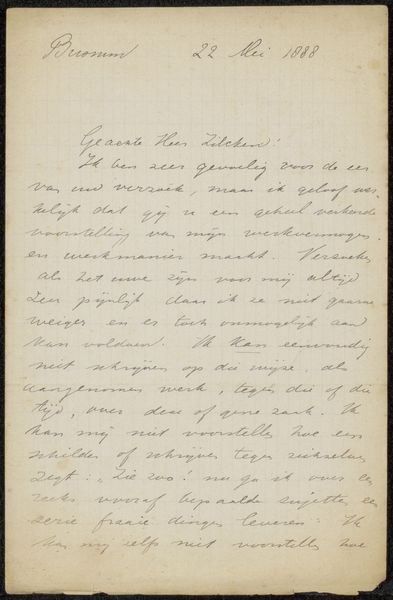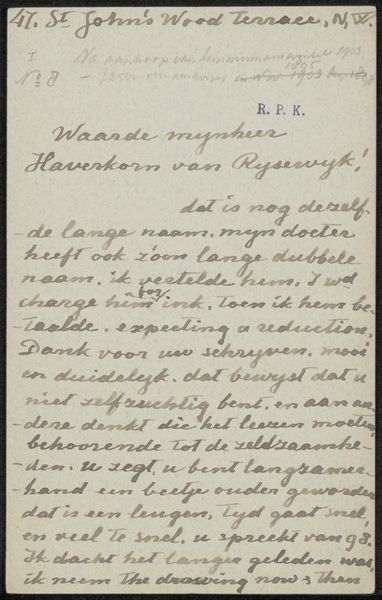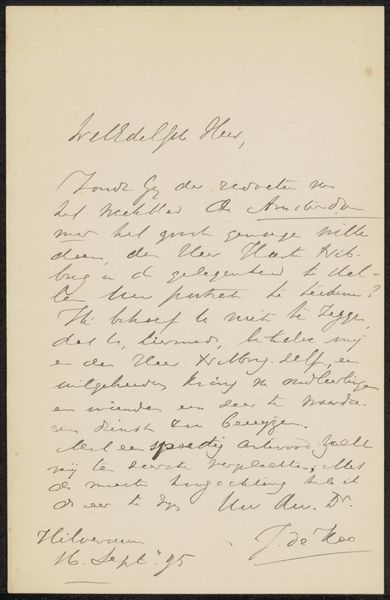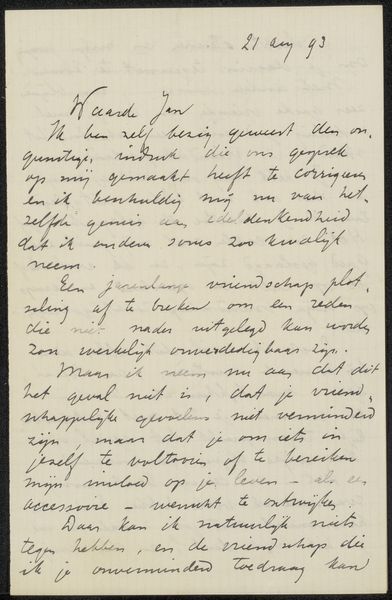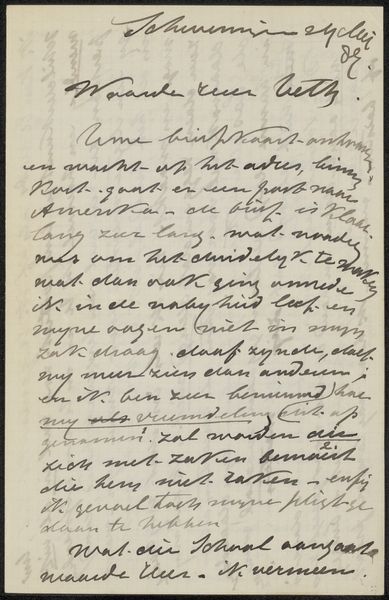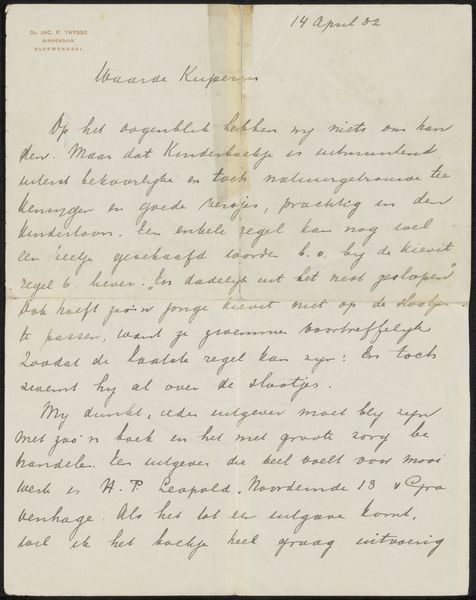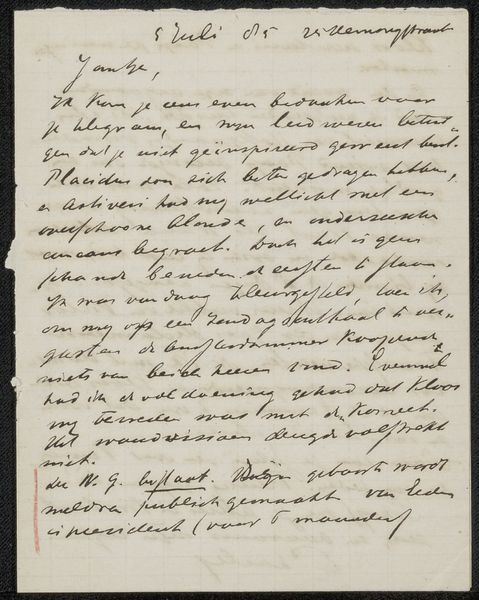
drawing, paper, ink
#
drawing
#
paper
#
ink
#
modernism
Copyright: Rijks Museum: Open Domain
Curator: Here we have “Letter to Pieter Haverkorn van Rijsewijk” created by Matthijs Maris, using ink on paper, dating between 1883 and 1915. Editor: The overall feeling of the work evokes this intense sort of frustration – like a glimpse into a very personal exchange and the challenges of maintaining relationships when art-making is at stake. Curator: The artist's own challenges certainly bled into his practice, and considering his positionality in the Dutch art world—a family dynasty practically—makes his self-deprecation and anger here really intriguing. Editor: I agree. This feels intensely personal; you can practically feel the anxiety, especially as he references blaming his framemaker! What is the historical context of Maris engaging with letter-writing as a means of externalizing the anxieties or external politics happening at the time? Curator: The period certainly affected the artist personally: he increasingly withdrew into himself, isolating himself in his London studio as the public grew more distant from his increasingly idiosyncratic later works. The references he makes throughout, blaming the frame-maker but referencing, "The japanese have a saying when you are in a hurry, go to bed…" This indicates some recognition of an active audience to communicate and lament, or rather reflect on shared conditions surrounding the challenges for many to engage during the historical landscape of the period. Editor: Knowing that this letter captures a moment of creative friction is crucial in contextualizing this piece, specifically examining that Maris even incorporates non-western methods in communication when he states, "The Japanese have a saying...". Overall, these details contribute to our appreciation, suggesting a layered dialogue occurring across his work during that period. Curator: Absolutely, by viewing this historical context in a modern world landscape, we can now view this written piece through the looking glass as both historically unique, and a present shared feeling within creative individuals, even in our present age.
Comments
No comments
Be the first to comment and join the conversation on the ultimate creative platform.
